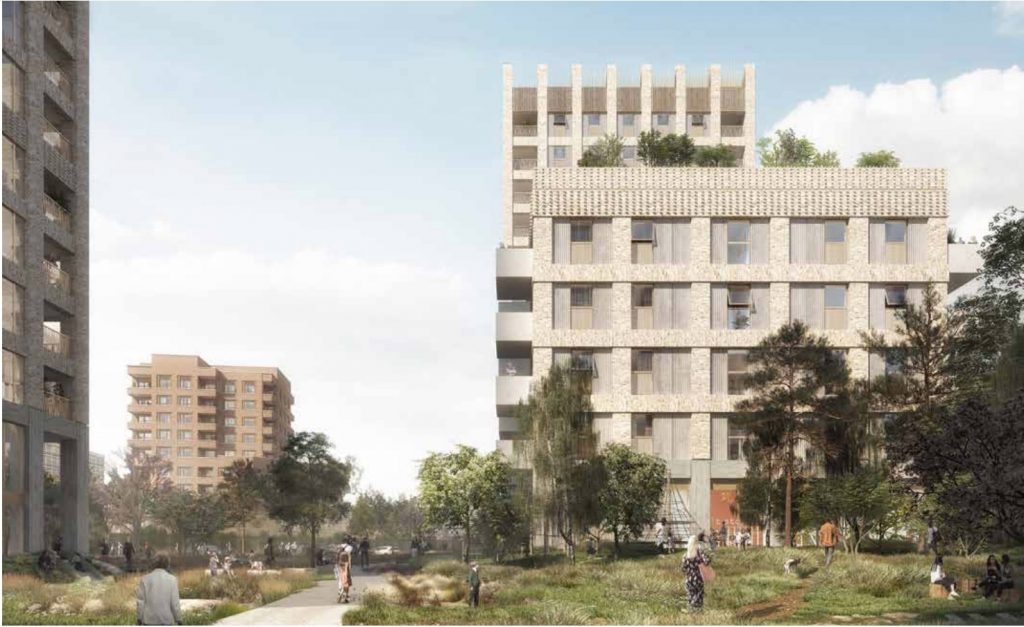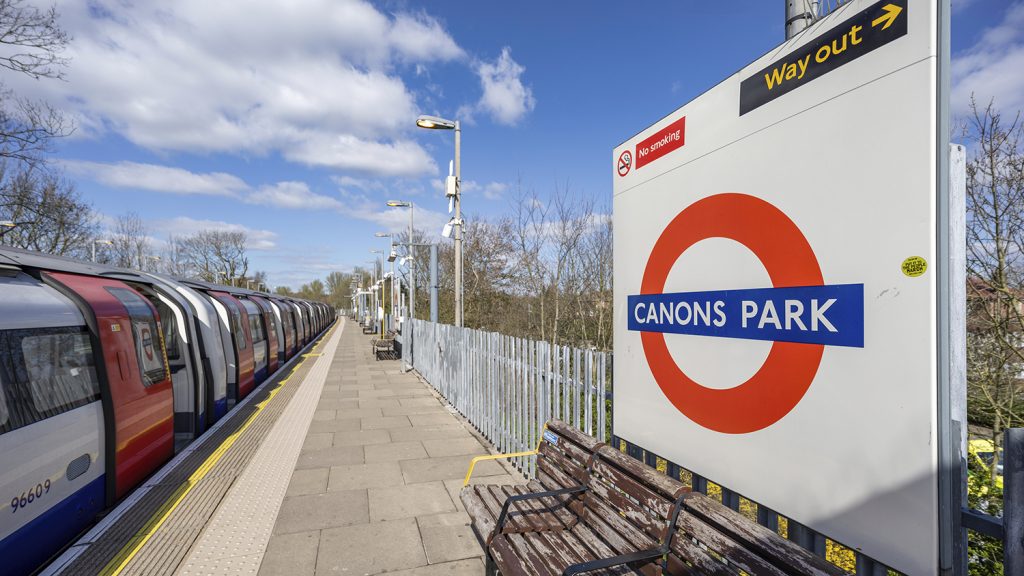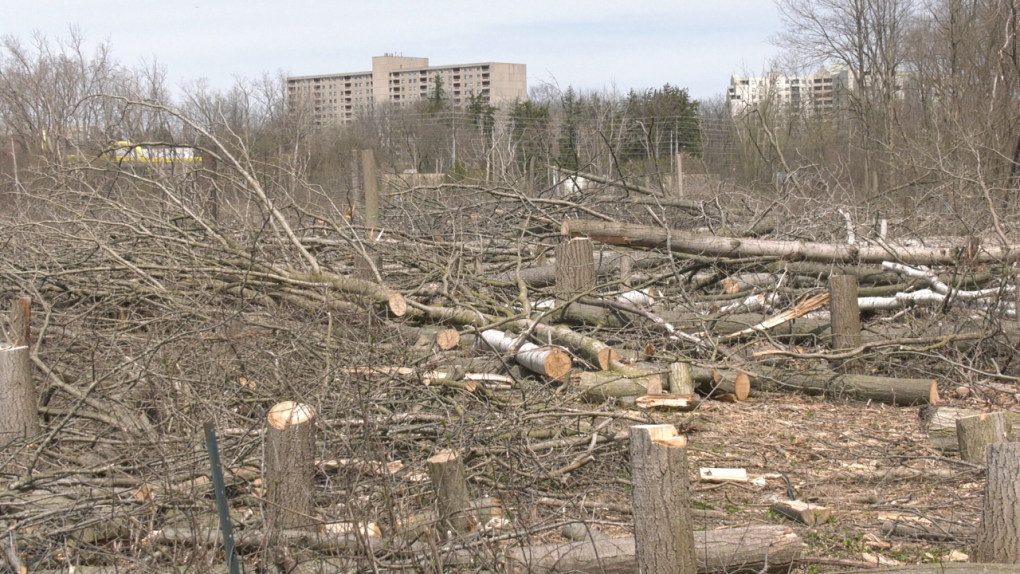Building homes on car parks should be a win-win – helping ease the capital’s housing crisis while encouraging Londoners to swap cars for public transport. So Transport for London (TfL) thought when it appointed a clutch of experienced housing architects to design homes by suburban tube stations.
But today those schemes are in doubt after being met by a solid wall of local opposition. More than 1,000 homes are tangled up in planning appeals or call-ins, including four car park schemes by Karakusevic Carson, Maccreanor Lavington and HTA Design. HawkinsBrown and Mae’s Cockfosters scheme is facing major opposition, while three others are in doubt. It is the latest setback for TfL’s wider 10,000-home programme, already struggling in the wake of the Covid-19 pandemic.
The car park debacle is part of a broader political tussle between mayor Sadiq Khan’s administration and Tory rivals on the London Assembly who accuse Khan of waging a ‘war on the suburbs’ by building towers in outer London. But it’s also a major cross-party constituency issue in Harrow, Enfield and Barnet. Last month, Chipping Barnet MP Theresa Villiers took the fight to the commons, urging ministers to ‘save the suburbs’ from Sadiq Khan.
Among many housing campaigners (and architects), there is little sympathy for campaigns to ‘save’ tarmacked parking lots while housing waiting lists bulge across the capital. As Anya Martin, head of policy at affordable homes campaign Priced Out, says: ‘It’s frankly quite embarrassing that TfL schemes keep getting shot down by politicians in the middle of a dire housing shortage.’
But the strength of opposition across the nine sites raises the question of whether TfL has miscalculated by proposing tower schemes in low-rise surburbia.
Stanmore tube station car park and Karakusevic Carson Architects’ rejected scheme for 277 homes next to the station
Source:Transport for London/KCA
David Birkbeck, chief executive of social enterprise Design for Homes, questions their scale. ‘What we’re getting,’ he says, ‘is schemes by good architects which have been commissioned to push the envelope of what makes a good place to live. When people look at some of these schemes in 25 years, it’ll be clear how the envelope was pushed too far.’
TfL, which owns roughly 2,200ha of land in Greater London, is under pressure to build more homes, having only clocked up 1,314 of the 10,000 starts it had pledged by March of this year. The transport authority points to the havoc caused by Covid-19, which has ‘wrecked its finances’ and hugely hampered its ability to keep building.
TfL director of commercial development Graeme Craig says that all new spending on its property development has been paused since March 2020 and, with no long-term funding agreement, its ability to enter into new contracts has been ‘limited’.
He adds: ‘This inevitably slowed progress on our development sites. We are still committed to delivering thousands of new homes. TfL is now working with both government and banks to access commercial funding to accelerate the development programme to allow 20,000 homes to be built on TfL land over the next 10 years.’
These homes will be built by a new commercial property company, which was announced in June following a £1.08 billion bailout of TfL by the government.
‘It’s frankly quite embarrassing that TfL schemes keep getting shot down by politicians in the middle of a dire housing shortage’
Its existing 10,000-home portfolio has 266 homes complete and 6,314 approved including over-station developments, such as AHMM’s in Southwark and Assael’s at Nine Elms, as well as small sites schemes like Peter Barber’s Beechwood Mews, which is nearly finished.
While most of its schemes have been approved, north-west London is proving a stumbling block. In addition to the four projects rejected by councils in Harrow, Enfield and Brent, Tate Hindle’s Wembley Park plans were also called in by the then housing secretary Robert Jenrick.
Plans for homes on more car parks at Finchley Central by PRP and High Barnet by Scott Brownrigg are in doubt after partner developer Taylor Wimpey pulled out last month. TfL has also withdrawn Karakusevic Carson’s Rayners Lane car park scheme in Harrow.
The issues vary from site to site with the main complaints concerning loss of parking spaces and the size and scale of the developments. Another persistent objection is housing mix and affordability.
At Cockfosters, where TfL and developer Grainger want to build 351 homes on the tube station car park, one of the main concerns is the loss of most of its 407 spaces. Residents argue it is heavily used as a park and ride facility for commuters.

HawkinsBrown and Mae’s 351-home Cockfosters scheme
Cockfosters Local Area Residents Association chair Colin Bull claims the scheme is a ‘bad design’, which is out of scale and will result in the loss of a ‘vital transport amenity’.
He says: ‘The station supports a wider catchment area and many of those people that drive there will continue to do so. We have compelling evidence including a petition with many thousands of signatures.’
And there were more petitions in Stanmore, where Harrow East’s Tory MP, Bob Blackman, collected signatures against plans to reduce car parking spaces from 450 to 300 to make room for what he called a ‘monstrous’ housing development of 277 homes (pictured left) designed by Karakusevic Carson.
Defending the scheme at Mayor’s Question Time, Khan said that at Cockfosters ‘96 per cent of people driving to the station are within walking distance of alternative public transport options’.
TfL also disputes the ‘park and ride’ comparison, arguing: ‘Many of those using our car parks make journeys starting outside the M25 and drive past multiple national rail stations for the convenience of parking next to a tube station.’
It adds that while removing car parks is ‘contentious’, it will encourage people to transition to greener transport, adding: ‘It is vital that we address congestion and air pollution and continue to encourage the use of sustainable travel.’
‘We need affordable housing desperately but it has to fit in. All they had to do was make the buildings lower’
But what started off as string of hyper-local planning disputes, with local residents Photoshopping tower blocks on to campaign leaflets, has now escalated. This is partly because the cause is being taken up by politicians of all persuasions.
‘It’s so political,’ says Birkbeck, ‘because a potent voting block have invested in big houses, often in the green belt, 5-10 minutes’ drive from the outer ring of tube stations. That was their life plan, so converting those car parks threatens it – and the value of their homes. And they can’t face taking the bus to the station.’
Labour London Assembly member for Harrow and Brent Krupesh Hirani opposed the Canons Park scheme but backed plans for Stanmore. He says more work is ‘clearly needed’ to bring residents back on board.
‘It is obvious TfL will have a battle on its hands with future car park schemes, and it needs to reflect on how it could tweak its approach that bit more to hit the right balance between tackling the housing crisis and keeping the community on side.’

Rejected: Maccreanor Lavington plans for 162 homes at Arnos Grove
The backlash against the car park housing is ‘as exasperating as it is inevitable’, says Russell Curtis, director at RCKa and an Enfield resident. ‘It’s apparent that we have to move away from car dependency and towards more sustainable modes of transport – especially in London’s outer areas – and therefore suburban railway car parks are an entirely appropriate location for high-density residential development.’
He adds: ‘Prioritising car parking over homes is self-serving and regressive, and we should resist this as strongly as we can.’
It also comes at a time when cities’ contribution to climate change is under the spotlight. At the COP26 climate summit in Glasgow, Khan was made the new chair of C40 cities, a group that has committed to curbing toxic air and slashing emissions.
Hirra Khan Adeogun, head of the Car Free Cities campaign at climate charity Possible, says outer London boroughs have more than double the number of cars than inner London, partly due to a lack of alternatives for getting around.
But in cities like Paris, she says, ‘car storage’ is being converted to more productive uses by removing more than half of its 140,000 on-street parking spaces. ‘London badly needs both more homes and fewer cars, and with so little space going spare and so much space dedicated to private car storage, nothing makes more sense than building housing on car parks.’
As evidenced by Khan’s recent expansion of the Ultra Low Emission Zone (ULEZ), any restriction on car use is likely to cause uproar. But loss of car parking does not carry much weight in planning terms, and Karakusevic Carson’s 277-home Stanmore scheme, which actually would provide a 300-space public car park, was not rejected by planning officers for this reason.
Instead it was partly refused on the grounds of the harm its seven buildings would cause to the ‘open character’ of the Kerry Conservation Area, a group of inter-war and post-war houses which planners described as ‘an early domestic group of Modernist Metroland built on the garden suburb principle’.
Tory councillor for Stanmore Park ward Marilyn Ashton says the local opposition was less about car parking, and more about the ‘monstrosity’ buildings of up to 11 storeys, which she called ‘ridiculously out of keeping’.
‘We need affordable housing desperately,’ she says, ‘but it has to fit in. All they had to do was make the buildings lower. You could argue it’s nimbyism, but this is a suburban area with low-rise dwellings.’
‘Those with time and energy to mobilise anti-development campaigns are seemingly rarely interested in anything other than preventing others from having a home’
Ben Rogers, former director of the Centre for London think tank, agrees with Ashton that the type of densities and heights TfL is aiming for are without local precedent, but says London’s suburbs are so low density it is hard to make them economically or environmentally sustainable.
‘Are they really a precedent worth following?’ he asks. ‘And of course the suburbs themselves were much more unprecedented – they were built a century ago on open country.’
None of the schemes’ designers would comment, but TfL’s Craig insists that it does not take a ‘one size fits all approach’, that it engages with the local community and stakeholders, and respects the individual context of each scheme.
It points to Cockfosters, where it worked with HawkinsBrown to alter the scheme before submission to include a vehicle pick-up/drop-off area, 47 publicly accessible parking spaces and other changes.
While overdevelopment is a frequent complaint made by local communities, another is the type of housing being offered. Enfield Council openly states it urgently needs more housing. It has been criticised for trying to release two sites on protected green-belt land to tackle its ‘serious housing crisis’, and has more than 3,500 families in temporary accommodation.
But this did not stop the council’s planning committee refusing permission for TfL’s 162 home-scheme, by Maccreanor Lavington, on the car park by the Grade II*-listed Arnos Grove Underground Station.
Planners had recommended approval, pointing out that the council needed to ‘optimise development on brownfield sites’, but one of the reasons councillors refused the scheme – and its 40 per cent affordable homes – was that it did not have enough family-sized units.

Canons Park: site of a Karakusevic Carson scheme
Source:Transport for London
This was also an issue with Karakusevic Carson’s Stanmore scheme, which would have provided 100 per cent affordable housing, with 68 homes for London Affordable Rent and 209 shared ownership.
Planning officers in Harrow were unimpressed by the high proportion of shared ownership, which they said ‘doesn’t reflect the borough’s priorities’ and is not ‘particularly affordable’.
At Cockfosters, HawkinsBrown’s scheme includes 211 one-bed apartments, 105 two-beds and 35 three-bed apartments. Bambos Charalambous, Labour MP for Enfield Southgate, objected to the scheme on the grounds that it would change Cockfosters’ ‘green suburban character’.
However housing mix also played a part. He told the AJ: ‘Recent planning proposals have yet to solve our local housing problems, with the bulk of the properties in the Cockfosters station car park development being one-bedroomed flats.’
It is a charge repeatedly levelled at the mayor by Tory Assembly member Andrew Boff, who draws a link between the predominance of one and two-bed flats and the way the mayor’s targets on housebuilding are expressed by the ‘number of front doors you can build’.
‘Rather than alleviating the worst problems of overcrowding we are building lots of front doors to alleviate those targets,’ says Boff.
He also dismisses the idea of residents as nimbies, saying: ‘I get the term “nimby” thrown at me, and any opposition [to development] is characterised as ‘pro car’ but it’s about recognising the quality of development.’
But for RCKa’s Curtis, the objection to smaller flats is another ‘trope’ rolled out by those opposing development at scale – ‘the one thing that seems to unify otherwise divisive local politics’.
He adds: ‘Those in comfortable circumstances, and with time and energy to mobilise anti-development campaigns, are seemingly rarely interested in anything other than preventing others from having a home.’
Martin of Priced Out echoes his words, adding: ‘Those arguing that we don’t want one-bedroom flats seem to forget the hundreds of thousands of Londoners currently living in shared houses, who definitely do want their own place.’
The car park rejections are understandably frustrating for architects, but it’s not just local residents who are concerned TfL’s schemes are going for quantity over quality.
Birkbeck takes the issue right back to procurement and argues that at the site disposal stage, TfL often has to go for the best financial offer.
‘TfL’s budget hole arising from Crossrail strong-arms it more than most to chase the maximum receipt,’ he says. ‘But if more sites went to bidders on the basis of a good financial bid and a clearly liveable design, they’d still get excellent returns.’
Robert Barker, of Stolon Studio, who has designed a TfL small site in Edmonton, makes a similar point, adding that the authority’s commitment to providing 50 per cent affordable means bids for TfL sites may be overly ambitious and ‘verge into the realms of overdevelopment’.
However TfL says on the car park sites it was not required to take the best financial offer, and that its procurement processes score ‘quality above price’.
It adds it has an in-house team of architects acting as design managers and a design review process which uses Mayor’s Design Advocates to look at proposals during at least three different stages.
Oliver Kuropatwa, the developer behind Peter Barber’s Beechwood Mews, says he was required to spend a ‘significant amount of time’ during every TfL bid process to discuss design plans. ‘I also know that good quality design played a huge part in us being successful with our bids,’ he adds. ‘At no point did I get the impression that there was a pursuit of lowest quality, highest return.’
As for the failed car park schemes, TfL is currently pushing the rejected projects through the appeals process. Curtis argues the mayor should be using his powers more bullishly to create a planning landscape of ‘greater certainty’ and overturn planning refusals, which are often ‘just petty political point-scoring’.
Adeogun agrees, adding: ‘London’s unusual governance structure means the mayor can be overruled by parochial local concerns. It may be that the GLA needs new powers to guarantee the capital’s crucial public policy goals can actually be met.’
A different tack could be for TfL to develop a local plan with design codes that have local support, suggests Rogers. Failing that, there is a ‘nuclear option’ of bringing together all his big sites into a mayoral development corporation.
‘Though his decisions could always be called in by national government. And that might be unpopular electorally.’
In the meantime, nimbies (and yimbies) look set to continue trench warfare in north-west London, and in an increasingly polarised housing debate there is not much space for nuance. For many, it understandably boils down to a question of: if we can’t build affordable homes on car parks, where can we?
But as Barker says, TfL expanding its housing delivery is exciting, but there is ‘greater necessity to lead by example’. He adds: ‘There is a real opportunity for TfL to develop schemes that are not just clones, but are genuinely well-designed, well-built, high-performance and socially responsible.’
Where are the contentious housing schemes?
Cockfosters
351 homes, HawkinsBrown and Mae
In planning
Arnos Grove
169 homes, Maccreanor Lavington
Under appeal
Stanmore
277 homes, Karakusevic Carson Architects
Called in by Sadiq Khan
Canons Park
118 homes, Karakusevic Carson Architects
Under appeal
Rayners Lane
128 homes, Karakusevic Carson Architects
Withdrawn
Wembley Park
Tate Hindle
Called in by housing secretary
High Barnet
300 homes, Scott Brownrigg
In doubt
Finchley Central
560 homes, PRP
In doubt
https://www.architectsjournal.co.uk/news/news-analysis-tfls-car-park-wars




